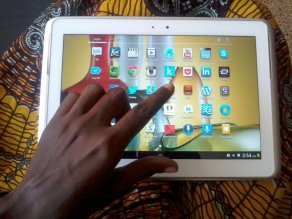Pundits and academics alike tell us that we are supremely fortunate to be living in a new “information age.” However, new findings which I present in an article in a Journal of Peace Research special issue paint a far more complicated picture of the consequences of increased human connectivity.

Linkages facilitated by social media technologies tend to be connections between friends and acquaintances. Photo: SandisterTei. Licensed under CC BY 3.0 via Commons
Ours is certainly not an age of civil peace. At this moment, neighbors are killing neighbors, in organized groups, in ongoing civil conflicts spanning at least 36 separate countries. Such violence is shocking in its brutality; but through our revulsion we tend to forget that in each of these conflicts, the lines of animosity were not simply given by nature. They were actively produced. Humans are not born knowing the difference between a ‘Serb’ police officer and a ‘Croat’ police officer, or the difference between a ‘Sunni’ mosque and a ‘Shia’ mosque. The participants had to be taught how to hate, and who to kill. In other words, the production of collective violence is always preceded by the production of a certain kind of collective idea: the idea that it is justified, or even necessary, for ‘us’ to kill ‘them.’
Increasing evidence indicates that the chances of success for such an idea can be powerfully influenced by the topology of the communication infrastructure present in a country. In previous work I presented global data showing that mass communication technologies, such as newspapers, radios, and televisions, have tended to favor state integration and stability. In that work I argued that by offering large nationwide loudspeakers to entrepreneurs of political ideas, such technologies incentivize the production of big ideas, which resonate on a national scale, and thereby facilitate the generation of unified national attachments. As a consequence, states with higher levels of mass media accessibility have been far less likely to experience violent internal divisions, as it has been more difficult for political entrepreneurs in these states to succeed on the basis of appeals to narrow sectarian loyalties, in the face of competition from larger-scale producers. That is, we might say that mass communication technologies function to strengthen economies of scale in the marketplace of ideas.
At first glance, one might think that the same would be true for social communication technologies, such as cellphones, which instead facilitate private interactio
ns between individuals. The problem is that linkages facilitated by social media technologies tend to be connections between friends and acquaintances, who tend to be quite similar to each other in terms of ethnicity, religion, socioeconomic status, and any number of other factors. As a result of this tendency toward “homophily”, social media technologies tend to promote communications that flow along preexisting social and political divisions, rather than across them.
- Read more at the Monkey Cage, where the entire text was published 25 February 2015.
- The blog post is based on an article in Journal of Peace Research: ‘Explosive connections? Mass media, social media, and the geography of collective violence in African states‘